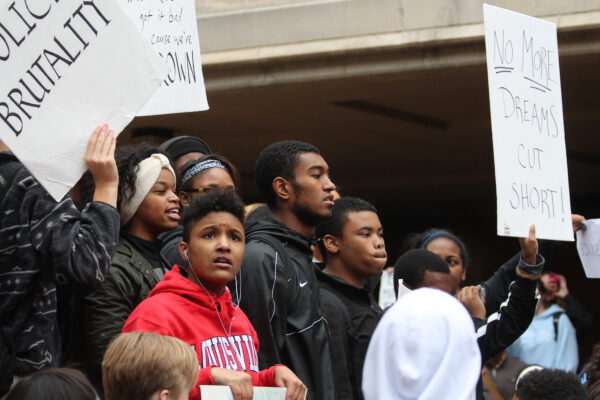By Beth Ingram and Sharon Vasquez
This post is the fifth in a series from the Association of Chief Academic Officers.
The latest post in the ACAO series shares perspectives of two chief academic officers—one from a public institution in the Midwest with 12,700 students, the other from a private university in New England with 7,000 students. The topic is the CAO’s working relationship with arguably the most important fellow vice president on campus—the chief financial officer.
It would be easy to take a “here be dragons” approach. After all, the CAO normally rises from a faculty rank and serves as the link between faculty and administration. On the other hand, the CFO has a very different preparation, perspective, and institutional charge. However, given the importance of cultivating and maintaining an effective working relationship between the academic and finance sides of the institution, we will dig into characteristics and strategies for a successful relationship.
So, how do CAO’s bridge the gap successfully? Beth Ingram starts us off:
Early in my administrative career, I received a piece of advice from my Dean, who later went on to be interim president of the university. He said something akin to this: “Never tell someone there is no money for something. There is always money on a college campus. You have to be honest enough to tell the person that their “something” isn’t enough of a priority to access that money.” I kept this in mind when I became a provost. One of the most important facets of the job is allocating resources to University-wide strategic priorities. These priorities include but are not limited to those of the faculty or deans. Admittedly it may be tempting (not to mention easy) to blame others—the Budget Office or the CFO—for lack of funding for a pet project. Instead I committed to avoiding the blame game and to this day communicate institutional priorities as effectively as I can while cultivating a respectful and collegial relationship with my Chief Financial Officer.
Sharon Vasquez adds an anecdote from her experience:
As the new university provost, I learned the first day on the job that enrollment fell well short of projections. An across-the-board budget cut had already been made. When asked where I would take a second, pretty significant cut I had a “what have I gotten myself into” moment. After a deep breath I said what any good provost would: that I wanted to consult with my deans and the faculty prior to submitting my recommendations. And I did that. But more importantly I asked the CFO to lunch. That was the smartest step I could have taken. This gave me an opportunity to begin building rapport. I was able to identify areas of common ground, to more deeply understand institutional context, and to ask informally for advice. It was the beginning of a trusting and productive partnership that ultimately provided important leadership to the institution at a financially challenging time.
So what does a good relationship between the CAO and CFO look like? Ideally the two agree on the University’s top priorities—the big roadmap. The CFO trusts that the Provost prioritizes the wants and needs of the academic enterprise and then understands the budget context well enough to protect the financial integrity of the institution. The Provost trusts the CFO to provide transparent and comprehensive financial and budgetary data as well as the institution’s not-so-transparent fiscal operations. The CFO and CAO (again ideally) agree on the institution’s mission, vision and goals and articulate institutional messages in a cogent and consistent manner.
Conversely, what does a poor relationship look like? The CFO hoards available funding for a rainy day, suspicious that the Provost will squander scarce resources. The Provost blames the CFO for a lack of resources and uses the CFO as a scapegoat when faculty or units complain of being underfunded. The CAO and CFO operate separately, with little mutual understanding of the institution’s path forward. Neither understands or empathizes with the other’s role and responsibilities. Neither works to find a common ground.
On a practical level, we suggest three overarching strategies that have grown out of our experience for cultivating and sustaining an effective working partnership between the CAO and CFO. Success will lead to academic affairs and budget offices that work productively together as well as leaders who present a united front to the president, the board, the campus, and faculty governance groups. As a result, the campus benefits from a cohesive leadership effort, consistent messaging, and reinforcement of an institutional perspective.
Develop common ground and share a united front
Central administrative jobs are about the University writ large: academic affairs, student affairs, athletics, facilities and operations, and others. That is, it’s not just about the faculty, degree programs and curricula. Instead the Provost is expected to articulate the vision as enunciated by the president and governing board while providing leadership in achieving the values and purposes of the academic enterprise. The role of the CFO is equally focused on institutional mission but through the lens of a measured and conservative business approach.
We recommend a handful of useful strategies to CAOs: Find time to learn about each other’s approaches to setting priorities, allocating resources, and preparing budgets. Work on telling the institution’s story to multiple constituents. Let faculty hear what the deans and your staff hear. Invite the CFO to join you in meeting with every academic department, with faculty governance groups, with administrative staff; not only will you hear the same concerns or questions, but you will show a united front to the campus. Also encourage members of your respective leadership teams to work as cross-functional teams on projects and issues.
Hold each other accountable, offer mutual support, and model collegiality
The success of the President and the campus depends on the CFO and CAO working as a team. Agree to a budget planning approach that recognizes both the aspirations of the campus and the need for fiduciary responsibility. It is not an accident that many accreditors assess the learning mission of an institution and its ability to remain financial stable.
Useful strategies include: Having each other’s back and presenting a united front, even when you don’t fully agree on all details. Charge your key senior staff to play by these rules as well. Snuff out negativity or pointing fingers at the “other office.” As Provost, don’t let your direct reports use a “lack of resources” as an excuse for making hard decisions about what will get funded.
Create strategies and practices for effective, unified communication
Clear, consistent messaging is an important part of effective leadership. As frequently as possible, get your common messages out in front of each other’s constituencies —staff as well as faculty.
Successful strategies include: Vetting and editing important campus messages with your CFO before sending. NEVER surprise or undercut your CFO by email, in front of a group, or with the President or Board. Find a few short-term projects on which to collaborate that have the potential to create wins for both of you. Present on the projects together and find ways to celebrate successes together. Make time for a standing meeting and hold it as a priority. Jointly present on issues to faculty, staff, and external constituencies. Share articles and information from other institutions. Enjoy each other’s company!
As Charles Darwin noted, “It is the long history of humankind (and animal kind, too) that those who learned to collaborate and improvise most effectively have prevailed.” The varied backgrounds of the CAO and the CFO are a strength that can, when the relationship is respectful and collaborative, allow an institution to move its vision forward.
ACAO aims to enhance the effectiveness of CAOs by providing networking and professional development opportunities and engaging members in academic affairs issues that cut across the diversity of higher education institutions and missions.
aims to enhance the effectiveness of CAOs by providing networking and professional development opportunities and engaging members in academic affairs issues that cut across the diversity of higher education institutions and missions.
If you have any questions or comments about this blog post, please contact us.


